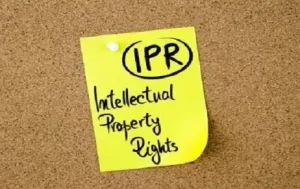A social media influencer is someone who creates content based on their niche in various…
Artist Royalties: An exegesis of Resale rights in India
Introduction
A fundamental postulate of Intellectual Property Rights is due recognition and benefits to creators, innovators, and artists over tangible creations of their original ideas. The rationale behind the same is to compensate/reward people for their original contributions to the world. Since an artist is responsible for the very conception of his painting, drawing, sculpting or a literary work, he is entitled to monetary compensation upon the artwork’s sale. The general position in intellectual property laws states that upon the assignment of the copyright by the artist over his artwork to another legal entity, the artist cannot enjoy any economic benefits attached to the artwork. However, re-sale rights exist as an exception to this rule.
[Image Sources : Shutterstock]

Legal framework in India
Re-sale rights find a fundamental backing in the Berne convention which even prescribes post-mortem resale rights to artists over their works. Article 14ter of the Convention states that with respect to original artworks, the artists, and upon their death their heirs, “enjoy the inalienable right to an interest in any sale of the work subsequent to the first transfer by the author of the work.”
India, being a member of the Berne Convention, adopted this principle as an addition to its copyright laws in 1994. In India, this right is protected under section 53A of the Copyright Act, 1957 (hereinafter referred to as the ‘Act’) which elucidates that artists and their heirs, upon the reselling of their original artwork by the owner, would be entitled to resale share rights in the original copies and manuscripts . For the sake of this section, it is imperative for the artists to be the original author of the artwork under section 17 of the Act. Furthermore, the resold artwork should be sold for a sum exceeding at least Rs.10,000 for availing the right under this section. The royalty percentage accrued to the artist has been capped at 10% by Section 53A. These rights subsist throughout the lifetime of the artist and for 60 years subsequent to his death . A complimentary provision to re-sale rights can be found in section 57 of the Copyright act which grants certain special rights to authors of a copyright. This provision allows authors to claim authorship over their work even after the assignment of the copyright . The author has a further claim for damages if the artwork is distorted, mutilated, or modified before the expiry of the copyright and when such changes to the artwork would be detrimental to the author’s reputation . In this sense, section 57 provides precursory rights to section 53 A.
Analysis
The value of art is not constant. With changing times, certain artists gain more recognition and certain may even lose some. The value of their artwork, thus, fluctuates with time. This fluctuation is seen as an inherent part of the original artwork under resale rights. The absence of resale rights for artists creates a disparity between the value of the artwork and what the artist receives in return. There are few images as powerful as the “starving artist” by Jean-Louis Forian which portrays the inequality between an artist’s creative prestige and his economic situation in society. Leonardo Da Vinci, Amedeo Modigliani, Johannes Vermeer, and Vincent Van Gogh are the most prominent examples of artists who died in destitution. In certain situations, it was the death of these artists which sparked the world’s obsession with their work. However, due financial recognition still remained absent. The most famous example, perhaps, is the instance of Francois Miller’s painting ‘Angelus’ selling for over a million Francs, while his daughter had to sell flowers in the streets to make a living . The law of Droit De Suite thus, came into being in France to ensure that the artist having original rights over an artwork is compensated fairly when the price of his artwork increases over time. Resale rights in this sense, serve as a modest attempt to provide an economic boost to artists who may be renowned by not compensated accordingly.
The major problem with the resale rights of artists is the lack of knowledge and awareness about the same. The Indian copyright act places the onus of distributing the necessary resale profits to the artist or his/her heirs, on the owner of the artwork at the time of sale. However, due to lack of knowledge about the existence of resale rights, artists and their heirs often do not contest this right in courts or ask for the necessary payments from the seller. One such artist is Tyeb Mehta, a part of the Indian Modern Movement, and a contemporary of renowned artists like M.F. Hussain and F.N. Souza. In 2018, nine years after his death, one of his paintings ‘Kali’, sold for over Rs. 26 crores; however, the entire sum was collected by the then owners of the painting and no amount was delivered to the late artist’s family. Hence, enlightening artists over their rights in India is essential to achieve the main object of the legislature behind Section 53A.
Author : Mrigank Joshi, A Student of Jindal Global Law School, in case of any queries please contact/write back to us via email to [email protected] or at IIPRD.
References
1. The Copyright Act, 1957
2. Berne convention for the protection of literary and artistic works, 1886
3. Yoo, Christopher. “Rethinking Copyright and Personhood.” University of Illinois Law Review, January 1, 2019.
4. Artists Rights Directive. “Directive 2001/84/ec of the European parliament and of the Council on the Resale right for the benefit of the author of an original work of art.” Official Journal of the European Communities (2001).
5. Filer, Randall K. “A THEORETICAL ANALYSIS OF THE ECONOMIC IMPACT OF ARTISTS’ RESALE ROYALTIES LEGISLATION.” Journal of Cultural Economics 8, no. 1 (1984): 1–28.



